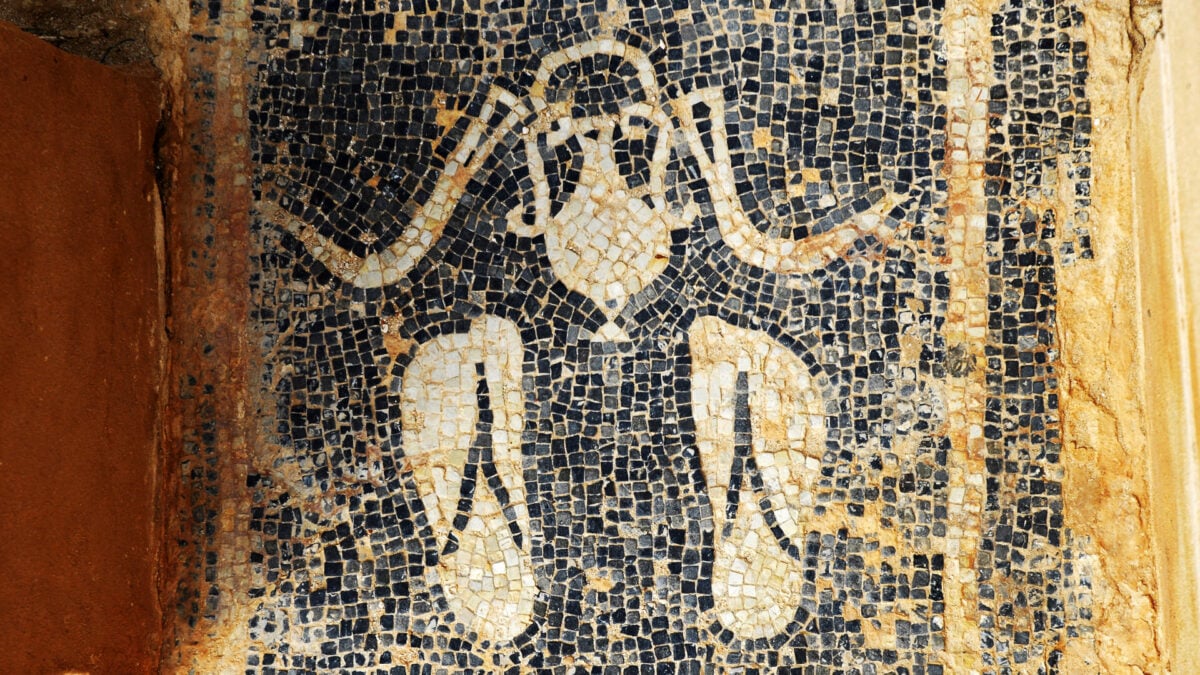1,600-Year-Old Depiction of Roman Flip-Flops Look So Real It Makes You Want to Wear Them

The ancient estate of Villa Romana del Casale in Sicily is known for featuring some of the most beautiful examples of Roman mosaics preserved in their original location. As if the site wasn’t already famous enough, researchers and students have uncovered a mosaic of sandals so modern-looking they could be straight out of a Havaianas commercial.
The sandals, part of a larger mosaic decorating the floors of the villa’s southern thermal area, consist of two pale flip-flops with slightly elongated big toes and black thongs. All in all, they look incredibly familiar, as if you could kick off your shoes and slip them on yourself.
“These are not simple decorations, but a refined work created by a mosaic craftsman of the 4th century AD,” reads a recent statement in Italian by the autonomous region of Sicily. Along with the 1,600-year-old flip-flop depiction, archaeologists also uncovered a mosaic inscription (whose text is not revealed in the statement) and three columns.
These findings “confirm once again the Villa’s extremely high level of artistry and architecture,” the statement continues. The archaeological work included over 40 students and researchers from around the world who participated via the international Summer School of Archaeology ArchLabs (Archaeological heritage in Late Antique and Byzantine Sicily).
The recently discovered flip-flops are by no means the first mosaic at Villa Romana del Casale to exhibit beach vibes. One of the most famous mosaics at the villa is often referred to as the “bikini girls” mosaic. As the nickname suggests, it features a number of women wearing what appear to be bikinis as they pass a ball around, like an ancient version of catch or volleyball.

Careful observers, however, will notice that one of the depicted women is carrying weights—which strikingly look like modern five-pound dumbbells—while another prepares to throw a disc. In fact, the ten women are actually participating in athletic competitions, and the mosaic is also called “le Palestriti,” palestra meaning gym in Italian.
As for the flip-flops, they weren’t strictly beachwear for the ancient Romans. Sandals were common footwear throughout the ancient Roman world. Interestingly (and uncomfortably), some suggest that unlike the ancient Greeks, the straps on Roman sandals fit between the second and third toes. As the flip-flop mosaic at Villa Romana del Casale doesn’t include actual feet, we’ll never know how they would have been worn.
Ultimately, the recent discovery stands as a reminder that we’re not all that different from the people that flip-flopped around that ancient villa over a dozen centuries ago.
… unless they really did wear the thong between their second and third toes. That’s just weird.









